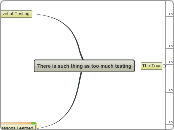a GUERRA HERRERA YESSICA DAYANNA 3 éve
242
MOVIMIENTO CIRCULAR UNIFORME
The text delves into the fundamental concepts of uniform circular motion and its related parameters. It begins by discussing frequency, which measures the number of revolutions per unit time, and period, the time required to complete one revolution, noting that frequency is the inverse of the period.









